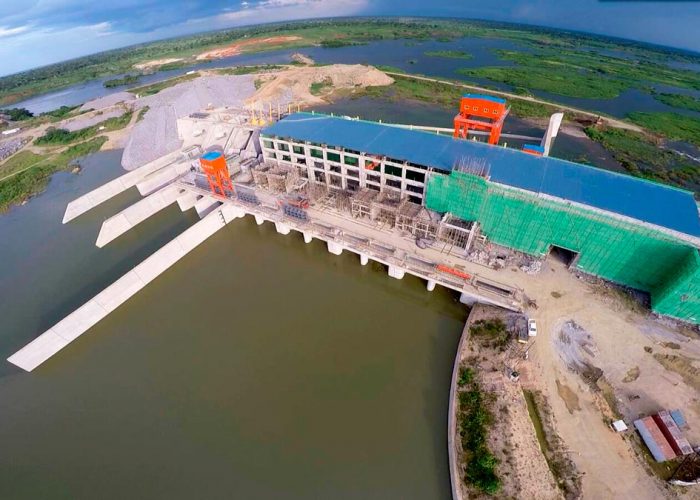As published in print with 

Uganda is soon to join the club of oil-exporting nations, but the country’s leadership realises that the long-term future lies in creating sustainable infrastructure to provide clean energy for generations to come. Major new hydroelectricity projects are set to power the needs of a growing economy and bring the whole nation onto the grid
Two major developments in Uganda’s energy sector are set to make their mark on the country’s economic prospects. The first is the imminent switching on of two hydro plants in a country where more than 80 per cent of the energy generated comes from renewable sources. The second quite different development relates to the discovery of petroleum in the Lake Albert Rift Basin in northwestern Uganda, and advanced plans to both export and refine crude oil.
The 600-megawatt (MW) Karuma and 183MW Isimba hydroelectric facilities will effectively double Uganda’s energy capacity at a stroke, allowing for increased rural electrification and boosting Uganda’s industrialisation drive. The extra power will help keep costs low for manufacturers and other intensive energy users, although increased generation requires a reciprocal effort in distribution, a fact recognised by Uganda’s energy minister, Irene Nafuna Muloni. “We need to ensure that the tariff comes down. We have invested in power generation, but now we must invest in transmission and distribution so that people can access it. We have several projects underway, including electrifying the districts that have health centres, schools and other public services.”
William K. Kiryahika, the CEO and managing director of Uganda Electricity Transmission Company Ltd (UETCL), explains that while the target is to reach all Ugandans in the next decade and a half, the key to striking a sustainable balance between needs and supply lies in development of the regional network. “We are trying to integrate the East African grid so we can better enhance the regional power rate,” he says of the thinking behind new infrastructure being put in place to export more energy to neighbouring countries, notably Kenya and Rwanda.

Construction work at the Karuma dam, a 600MW hydropower project being carried out under the auspices of Uganda Electricity Generation Company Ltd. Photo: UEGCL
Nor is Uganda content to rest on its laurels in the form of massive hydro generation. “As much as we are endowed with generous water resources, it is important, particularly in light of climate change, to be able to tap into other renewable sources of electricity. There are studies ongoing that are assessing the potential for wind, in addition to solar, geothermal, and natural gas,” explains Harrison Mutikanga, CEO of the Uganda Electricity Generation Company Ltd (UEGCL).
Solar power is already being tapped with the 2016 launch of the 10MW Soroti plant in the north of the country. No stone is being left unturned, with biomass generation from sugar cane residue known as bagasse underway, and even nuclear power is on the table for the future. Several uranium-rich sites have been identified by the Ministry of Energy and Mineral Development and April 2018 saw experts from International Atomic Energy Agency (IAEA) inspect Uganda’s plans.
Solar-powered street lights ready to be installed along Kampala’s Bombo Road. Photo: KCCAImages
But in the short and medium term, oil is set to grab the headlines. A series of more than 20 finds in a geological area known as the Albertine Graben amount to an estimated 6.5 billion barrels of oil, with around 1.5 billion already considered recoverable. The quantities of waxy oil are sufficient to have sparked an investment process that will be worth $20 billion, according to Ernest Rubondo, the executive director of the Petroleum Authority of Uganda (PAU). “Uganda’s GDP is just below $30 billion, so you’re talking about two-thirds of the country’s GDP being invested in the next three to five years,” Mr Rubondo adds.
Uganda is building a 60,000 barrel-a-day refinery to serve national and regional demand, but around three times as much oil will eventually slide along the 1,445-kilometre East Africa Crude Oil Pipeline to the Tanzanian port of Tanga. Due to be completed in 2020, the $3.5 billion pipeline has joined the Uganda National Oil Company, Tanzania Petroleum Development Corporation, China’s CNOOC Group, France’s Total and the UK’s Tullow Oil as investors.
According to PAU’s executive director, Nigeria’s Oranto Petroleum and AMA Energy from Australia are also entering the Ugandan sector, with more investors expected once the oil begins to flow. “The UK has been producing oil for a long time, developing a lot of expertise, so there’s no doubt that UK companies will come and participate,” Mr Rubondo notes.
UNOC’s responsibilities fall into two main areas: representing the government’s commercial interests in exploitation of petroleum and ensuring national participation in the new sector. “Like any good company, we should make money for our shareholders and that would lead to a dividend that goes straight to the petroleum fund, which is very much focused on development and infrastructure,” says Josephine Wapakabulo, UNOC’s CEO.
UNOC wants to identify local suppliers and companies to develop a Ugandan ancillary sector for the oil industry, creating a knock-on effect in manufacturing and other sectors. “Oil and gas is finite,” notes Wapakabulo. “It’s about what this sector can subsequently develop in terms of infrastructure, development and other parts of the economy, such as agriculture and tourism.”

UNOC is permitted by law to seek a licence for an exploration block. As a newcomer, the company will be looking for a joint-venture partner who can bring in more technical and financial muscle. Other investment opportunities will also arise in conjunction with UNOC as the company develops a 300-acre green-field storage terminal west of Kampala, and in the development of the area around the refinery. As well as the international airport set for construction at Kabaale, land will be made available to develop an industrial park.
“A lot of other companies will have to supply food, equipment and logistics, so you’re actually going to see much broader development. We’re doing oil and gas right because it’s one of the catalysts that will take Uganda to middle-income status,” says UNOC’s CEO.